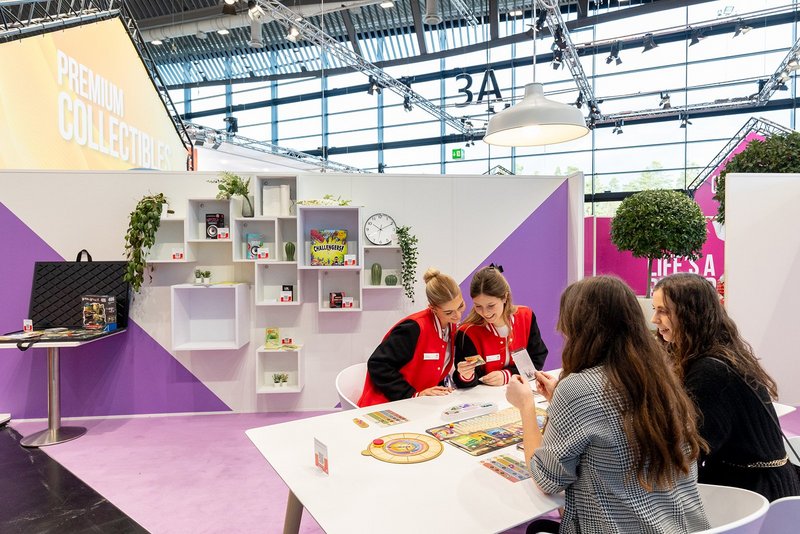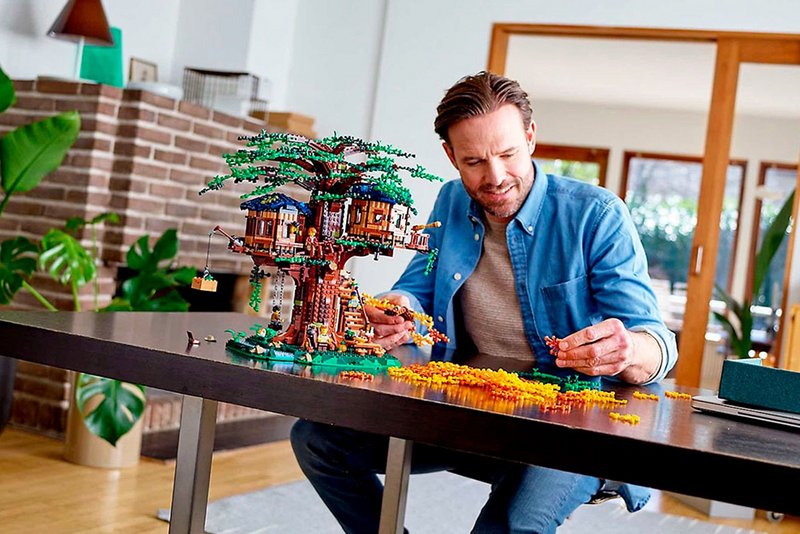
Masterstrokes in brushmaking: tradition meets excellence
da Vinci Künstlerpinselfabrik Defet champions craftsmanship and sustainability
By Anja Kummerow
When creatives and kidults use premium quality brushes made of synthetic hair to artfully apply paint to paper or their miniatures these days, few probably know the extent of the role played by high-definition television in this area. For da Vinci Künstlerpinselfabrik Defet GmbH based in Nuremberg, it has led to new creations in the cosmetics sector that have also found their way into the art world.
They sound like the stuff of poetry: Kazan squirrel hair, Russian black sable hair, Kolinsky and Siberian red sable hair – the raw materials used to produce brushes made of natural hair. Each type of hair has its own properties that make it more or less suited to different painting styles and artistic techniques. Although synthetic hair may lean more towards prose, its quality is now so good that users find it difficult to tell it apart from natural hair by touch alone. Whether natural or man-made: personal preference has long determined which is chosen and not the price tag anymore. Indeed, both can be very expensive.
Brushes – shaped by hand

The long-standing business located in the Franconia region of Germany with its da Vinci brand is one of the best-known companies of its kind in the world. And one of the last. Many of the companies that used to make traditional handcrafted brushes are now gone. Ten to twelve steps are needed to produce a finished brush. The most difficult of these is shaping the brush, which “is not simply cut, but properly bound and shaped by hand”, says Hermann Meyer, Managing Director of Da Vinci Künstlerpinselfabrik Defet, describing what makes the work so different. This requires skill. And time. Around 100 people work in production and 30 in administration, distribution and sales at Da Vinci Künstlerpinselfabrik Defet. The apprenticeship to become a skilled brushmaker (Geselle) lasts three years. It takes time to – quite literally – grasp all of the materials.
Four to eight apprentices per year

The only apprenticeship in this craft anywhere in Germany is now offered at the vocational school in Dinkelsbühl, some 70 kilometres from Nuremberg. It covers the handling and properties of the various raw materials as well as brush binding. “It’s one of the smallest apprenticeship classes overall”, says Joint Managing Director Julian Rottner Defet. There are only four to eight apprentices per year. In order to encourage young people to pursue a career as a brushmaker, he links up with schools in the vicinity and offers internships. The company was able to take on two apprentices in 2024. Oftentimes, the young people coming through are relatives of current employees. “We now have three generations of one family working for us”, says Hermann Meyer with a touch of pride.
Even though there is still a lot of manual work involved in producing the brushes, “the training has become more technical”, says Julian. While the craft may appear to have been around a long time, there have only been official apprenticeships in the trade since 1984 – a period of 40 years. Today, just four companies in Middle Franconia take on apprentices in brushmaking. At one time, there were more than 80 manufacturers in this area. Those companies had enjoyed a very favourable environment for their operations with the fur market in Fürth at the time.
The challenge of procuring raw materials
A present challenge for Hermann and Julian is getting hold of suitable raw materials. Natural hair has become expensive. And even high-quality synthetic fibres are difficult to source – “at least the kind that meet our standards”. Synthetic hair should be capable of imitating natural hair according to Julian. However, the way it which it is manufactured is just as important to the company. “Acids are used in the manufacture of the fibres. So, occupational safety and environmental aspects such as the water cycle play a significant role for us. We look out for this with our suppliers.”
Trend towards crimped fibres
Both are very enthusiastic about the range and capabilities of synthetic fibres: their degree of fineness and uniformity as well as the processing possibilities. “And that they don’t shed”, says Julian, who is responsible for product development and quality assurance in the company. Combining different synthetic fibres has proven to be the ideal way to apply make-up for television: the brush head holds enough make-up and the ultra-fine synthetic fibres at the tip distribute it evenly over the face. The idea and such hybrid brushes have long found their way into the art world as well. Among the current trends there are crimped fibres that can absorb more liquid.
Cat’s tongue, sword striper and gilding brushes

In its search for high-quality fibres, the company has found what it is looking for in Korea and Japan. Manufacturers there are capable of producing uniform fibres “that can be used to make fine, shaped tips that taper towards the front”. Everything is possible: extremely fine brushes of size 20/0 made of synthetic fibres, consisting of ten or eleven hairs, through to size 50 in Kolinsky red sable. There are round, flat, wide brushes, cat’s tongue brushes, sword stripers and gilding brushes, used for everything from delicate watercolours and rustic oil paintings through to gilding.
Even King Charles III is a fan of da Vinci products
There are some artists who now swear by synthetic fibres and others for whom only natural hair will do. da Vinci offers everything from cheaper entry-level models to truly high-end professional tools costing €3,000 and more. Per brush. “We’ve just produced three such brushes to order”, explained Hermann Meyer. Brushes with extra-long handles are made for other artists. Fans of the brushes from Nuremberg – from recreational artists to master painters – can be found all over the world. Even King Charles III can be seen using a da Vinci product in a watercolour book. The company can do anything – but its products don’t come cheap. “We don’t fare well in markets where price is everything.”
The company produces six million brushes a year. Around three-quarters of its sales come from artist brushes. The company’s products are available in over 80 countries in the world. Its export share is 65 to 70 percent. Influencers and brand ambassadors, some with hundreds of thousands of followers, also help to boost sales.
Becoming the most sustainable brush manufacturer in the world

The signs are clearly pointing to growth. A new production facility is being added at the company’s headquarters – complete with a photovoltaic system for self-generation of energy. “We want to become the most sustainable brush manufacturer in the world”, explains Julian Rottner Defet. At this time, he and Hermann Meyer believe the greatest potential for growth lies in school supplies – especially in German-speaking markets and in Italy and the Benelux countries. It has not gone unnoticed in art lessons that only mediocre results can be achieved with cheap paints, paper and brushes. And that these take the fun out of the experience for children and young people.
Further areas for growth include products for model building and miniature painting. “Such hobbies are really popular right now”, says Julian. The company is always working on new products and fibre blends, ensuring it is ready for any new trend and technique.
About the author
Anja Kummerow spent more than 20 years reporting on Nuremberg’s exciting companies and many interesting trade fairs, like the Spielwarenmesse, in her role as business editor for the Nürnberger Zeitung newspaper. She has been a freelance journalist, speech writer and book author since 2020.
Da Vinci Künstlerpinselfabrik DEFET GmbH
Brushmaker apprenticeship at Staatliches Berufliches Schulzentrum Rothenburg-Dinkelsbühl: More informations here.




